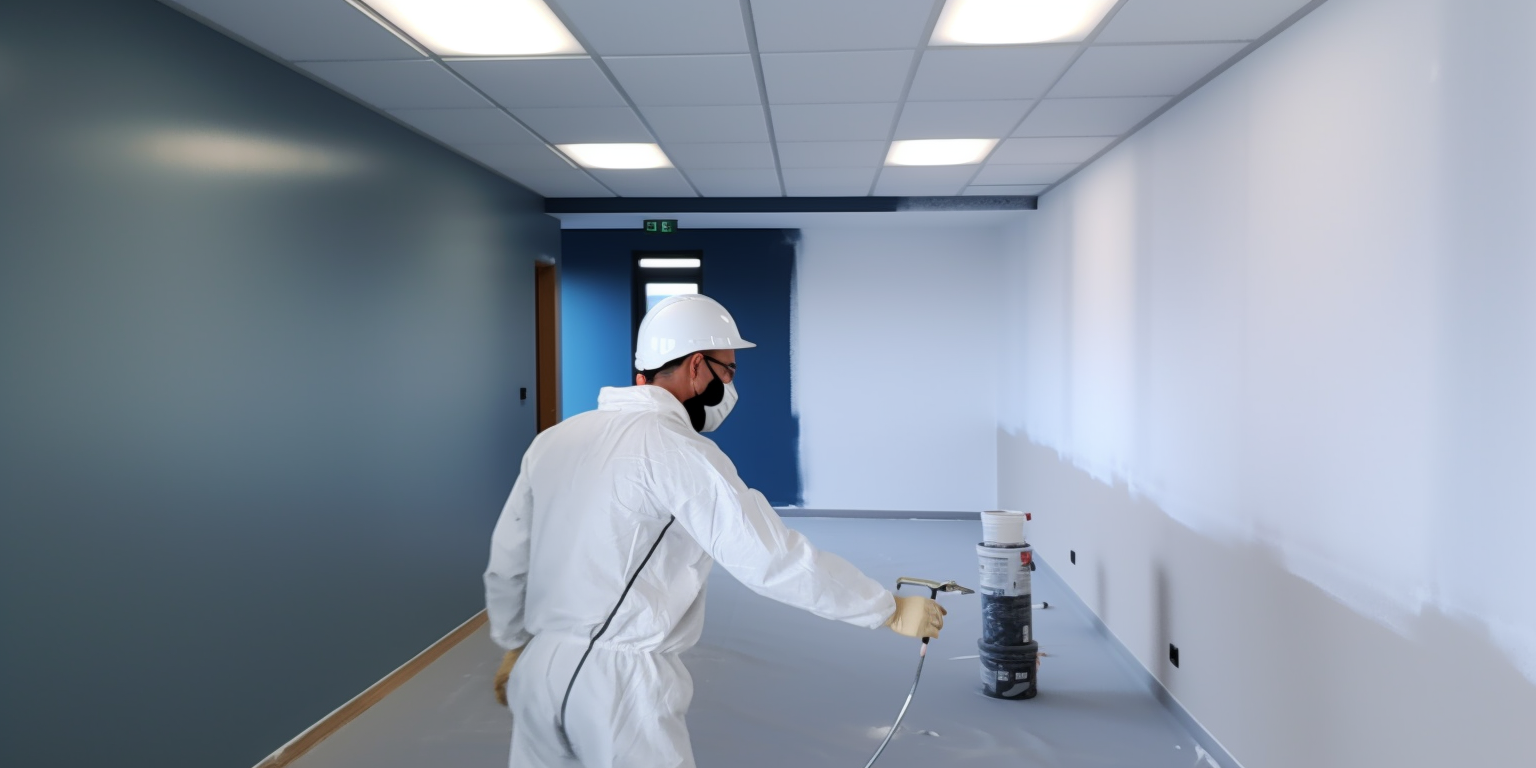Passive Fire Protection Systems are essential components of any building, providing extra layers of safety in the event of a fire. They work by slowing down the spread of flames and smoke, giving people time to escape and firefighters time to put out the blaze. Examples of passive fire protection include insulation materials, intumescent coatings, fire-resistant doors and windows, and smoke detectors. With these measures in place, a building can remain safe for longer during an emergency situation.
History
Passive fire protection systems have been around since ancient times. They were first used by the Romans, who built structures with specially designed layers of masonry that created an effective barrier to contain fire. Later, in the Middle Ages, cork and clay were used for fire proofing, until gypsum-based plasters were developed in the 17th century.
In the 19th century, asbestos was discovered and began to be widely used as a fire retardant material. It was applied directly to walls and ceilings as a form of insulation during construction or retrofitting of buildings to prevent fires from spreading. Asbestos use continued until it was banned in the 1980s due to health risks associated with its use.
Today, there are many types of passive fire protection systems available on the market. These range from intumescent coatings which expand when exposed to high temperatures, providing an additional layer of insulation against flames, to non-combustible materials like concrete and steel that are designed to slow the spread of fires through a structure. Other options include spray-on foam that creates a protective barrier between combustible materials and open flames; special fireproofing paint that forms a protective layer; and smoke curtains that restrict movement through a building in case of an emergency situation.
No matter what type is chosen, passive fire protection systems can be highly effective in containing fires before they become catastrophic disasters. They provide extra protection for people and property by slowing down their spread and allowing firefighters more time to access emergency situations safely. This makes them an invaluable tool for both residential and commercial properties alike.
Passive Fire Protection System Examples
1. Firewalls – Firewalls are walls of masonry or concrete construction that are designed to resist the spread of fire from one area of a structure to another.
2. Sprinkler Systems – Sprinkler systems use water spray nozzle heads, which open in response to high temperatures and activate when exposed to flames or heat, releasing large quantities of water over a wide area.
3. Smoke Detectors – Smoke detectors detect smoke particles in the air and cause an alarm system if they exceed a certain concentration threshold, providing early warning for fires before much damage has been done.
4. Intumescent Coatings – Intumescent coatings expand rapidly when exposed to flame or heat, forming an insulating foam layer on columns and other structural elements that protect them against fire damage for up to four hours depending on their thickness and application method.
5. Flame Retardants – Flame retardants are chemical compounds used in building materials such as plastics, fabrics, paints and foams that reduce flammability by delaying ignition time or slowing down the combustion process once started.
6. Fire Doors – Fire doors are specially designed doors with fire-resistant frames and insulation cores that are used to create physical barriers between rooms or building sections in order to contain flames and smoke during a blaze.
7. Escape Routes – Escape routes are designated paths of travel, such as stairwells or corridors, intended for emergency evacuation from a burning building in case of an emergency.
8. Emergency Lighting – Emergency lighting provides illumination in the dark corridors and stairwells of buildings during power outages and other emergencies, helping occupants evacuate safely and quickly.
Types of Spaces that can Benefit the Most
Passive Fire Protection Systems (PFPS) are a vital part of any commercial space. These systems can help protect property and ensure safety in the event of a fire. They are especially beneficial for businesses operating out of large, complex structures such as warehouses, high-rise buildings, and industrial plants.
When installed correctly, PFPS can provide multiple benefits that help to protect the occupants and contents of any building. For example, they provide protection against heat transfer by using materials that can withstand temperatures up to 1000 degrees Celsius or higher. This helps to reduce the spread of flames and smoke throughout the building while also allowing more time for people to evacuate safely. Additionally, PFPS helps to reduce structural damage and prevent collapse risks by providing additional support in the event of a fire.
Moreover, PFPS can also be used in combination with active fire protection systems such as sprinkler systems or fire alarm networks to further enhance safety levels. The combination of passive measures such as insulation and sealants with active solutions like smoke detectors or water sprays ensures that emergency responders have ample time to reach the affected areas before major damage occurs.
Any business operating out of large commercial spaces should consider investing in Passive Fire Protection Systems due to their cost-effectiveness and multiple benefits. Warehouses with hazardous materials or combustibles stored inside them can benefit greatly from this type of system as it will offer extra protection against fires and other related emergencies. Similarly, public buildings like schools or hospitals should consider investing in PFPS for improved safety levels in case of an emergency situation.
Process of Installation
The process of installing Passive Fire Protection Systems consists of several steps. Firstly, the area in need of protection must be evaluated and surveyed in order to identify the potential fire risk and determine what type of system is necessary. After this, the necessary materials must be purchased and installed in accordance with fire safety regulations. This includes making sure that all components are correctly placed and secured for optimal protection. In addition, any insulation, wall linings or other items that may impede the effectiveness of the system should be removed or replaced as required.
Once installed, different types of tests can be performed to ensure that the system is functioning properly. This includes a pressure test to check if airtight seals are present, as well as a smoke test to observe how well the system disperses smoke in case of a fire breakout. Other tests such as temperature gauge readings and heat radiation analysis may also be performed. Finally, maintenance should be carried out regularly to keep the system functioning at its maximum efficiency over time.
Installing Passive Fire Protection Systems is an intricate process which requires expertise and knowledge in order to achieve optimal results for effective fire protection. As such, it is important to consult with professionals who specialize in this field before embarking on any installation project in order to ensure maximum safety for all involved.
Support-driven Tech Solutions
New tech solutions have been developed to further support PFPS and create more efficient and effective systems. The use of sensors is one way that new technology is being used to improve PFPS performance. Sensors can detect smoke, heat, flames, humidity, and other hazardous conditions before they become dangerous. This data collected from the sensors can be used to inform occupants in real-time about the changing environment, allowing them to take preventive measures before the danger level gets too high. Additionally, this data can be used to activate automated fire control systems such as sprinklers or fire suppression systems.
Another way that technology is supporting PFPS is through cloud-based storage solutions. These solutions allow for remote monitoring of PFPS installations for improved testing efficiency as well as easier maintenance management. Data collected from these systems can be sent to a secure cloud platform where it can be easily analyzed and used to adjust settings or alert emergency personnel when necessary.
Advances in materials science have enabled the development of new insulation products that are more effective at controlling thermal transmission than traditional materials. By using these products within a PFPS installation, it is possible to increase its fire resistance while reducing energy costs associated with heating and cooling the structure.
These technological improvements are just some of the ways that technology is supporting Passive Fire Protection Systems today; there are many more opportunities out there for developers who want to create even better systems. With continued innovation in this area, building owners will soon have access to a range of robust PFPS solutions that will provide greater protection against fires while also saving energy costs for their buildings.
Statistics on Usage of Tech Solutions
Recent studies have revealed that businesses are increasingly turning to tech solutions to maintain Passive Fire Protection Systems. This is in part due to the growing complexity of fire safety systems and the need for comprehensive monitoring capabilities.
Research shows that around 85% of organizations have adopted some form of automated fire protection system technology, with more than half of these taking advantage of advanced features such as AI-enabled analytics, remote management, and real-time data collection. Additionally, about 25% have implemented a full-scale digital transformation strategy specifically designed to meet their fire safety needs.
These statistics suggest that businesses are recognizing the potential benefits associated with adopting tech solutions for Passive Fire Protection Systems. Automation can help organizations quickly detect and respond to threats before they become major disasters; it also allows them to swiftly resolve issues remotely instead of dispatching personnel onsite. Moreover, it can provide detailed information about potential hazards and historical data on how similar issues were previously addressed, which can be invaluable in assessing risks and making informed decisions.
The fact that an overwhelming majority of businesses are leveraging tech solutions in order to maintain Passive Fire Protection Systems speaks volumes about the necessity for continued investment in this area. As more organizations begin embracing new technologies, it is likely that the adoption rate will only continue rising.
Key Takeaways:
It is clear that tech solutions are becoming increasingly necessary to maintain Passive Fire Protection Systems. The benefits of automation, remote monitoring and real-time data collection cannot be overstated in terms of providing comprehensive fire protection. Recent statistics suggest that businesses have begun recognizing the potential advantages associated with these advanced technologies and are investing heavily in them for their own safety needs. Going forward, it is likely that more organizations will embrace new technologies as they become available, ensuring maximum fire safety across both commercial and residential buildings alike.



